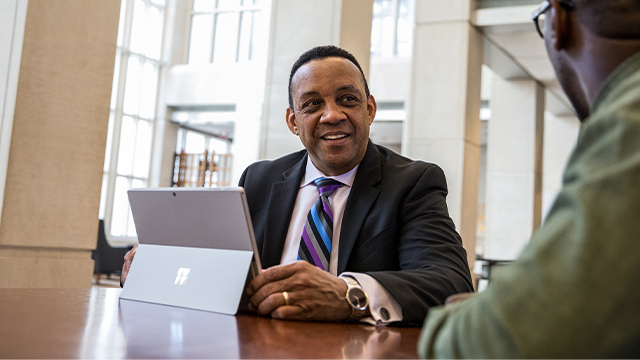
Banking on AI: How the banking industry is adopting tech to take on the future
David Koscheski | Director of Industry, Banking
Exceeding customer expectations
Retail and institutional banking customers expect customized products, services and personalized experiences. New and exciting applications of emerging technology to the financial services industry, and in particular to banking, is opening the door to new ways of delighting customers. Banks that can take advantage of these technologies to replace historically cumbersome processes and turn around seamless experiences to enhance their customers’ lives, are gaining traction by leaps and bounds over those that do not. Personetics, a company focused on delivering AI-powered personalized insights and advice within digital banking platforms reports 35% higher customer engagement, 20% growth in accounts and balances, and 17% on advice and product recommendation taken (CTR) when value added personalized insights and advice are provided to customers.
Banking institutions that are investing in AI not only work better for their customers; they work better overall. Leveraging AI and machine learning to analyze data and offer proactive solutions to customers saves time across operations and sales functions and solidifies the bank’s relationship with the customer. For example, being able to automatically offer a longtime customer a better rate on their loan or offer add-on services to an existing account based on timely information saves account managers time on paperwork and on the phone with customers.
AI+HI = Individualized financial wellness
Many people in the banking industry think of AI as either a means to automate specific operations or as a technology that will replace all human workers. Neither of those assumptions is how banks are actually using AI. Banks that synthesize digital and human intelligence to focus on developing better products, services, and client experiences deliver greater value and more customer loyalty.
Banks get the most out of AI+HI through leveraging each of their strengths: AI to uncover insights at scale and drive simple transactions on digital channels, and HI to deliver on more challenging, advisory interactions that build customer trust. AI can help HI stay ahead of individual needs and provide valuable, actionable insights to improve the customer experience. With the two forces working in tandem, banks can deliver Individualized Financial Wellness through enabling personalized experiences at scale across a larger swath of their clientele, beyond only high-touch clients.
BNY Mellon has embraced and embedded the AI+HI model across its entire digital business. It leverages this model to help re-imagine the client onboarding experience by streamlining information gathering for account set up, applying predictive analytics for capital management through balance forecasting, as well as automating processing of client instructions so that transactions or cash movements can be processed immediately. It has also launched an artificial intelligence-based reconciliation and data control solution aimed at better servicing asset servicers, asset managers, transfer agents and distributors. “Unlocking the best of both artificial and human intelligence and using them in combination is fundamental to BNY Mellon’s digital transformation. It enables us to improve the client experience and to achieve the most lasting benefits and impactful performance improvement,” says Roman Regelman, Head of Asset Servicing and Digital, BNY Mellon. “We are not just experimenting with emerging technologies, we are deploying them at scale, equipping our employees with robotic process automation, machine learning and artificial intelligence tools to transform what we deliver for our clients and how we deliver it.”
Addressing diversity, bias, and risk
From a practical perspective, understanding, measuring, and monitoring risks are vital parts of AI adoption. The risk modeling process has to have rigor. First, there’s a need to address the known elephant in the room: AI can take on the bias of the data and of human developers. Again, this is where AI+HI can make a big difference. To ensure fairness, a bank needs to be monitoring and making sure cultural, gender, race, and thought diversity are part of the adoption process. When the individuals working on algorithms are diverse and effectively skilled to address biases, AI learns a broader range of data. It also helps AI protocols to agree internally on a code of ethics. Avoiding bias is not only the right thing to do for customers, it is a regulatory mandate. Luke Thomas, Head of Banking U.S. Financial Services at Microsoft emphasizes that “We see AI as transformational to how banks reason over their massive amounts of data. And we could not be more aligned on the importance of ethics and responsible implementation of AI technologies. Within Microsoft we embed AI directly into our development lifecycle and have developed a set of guiding AI principles to govern fair and unbiased outcomes. We partner directly with banks and their partners to leverage these guidelines in their business outcomes.”
To confirm that the AI process aligns to corporate standards and ethics guidelines, it’s valuable to establish a model for AI governance. This model outlines the checks and balances being put into the process. Before implementing AI, banks should understand which aspects of the business will leverage AI, the methodology and parameters behind the appropriate use of AI, and how to make sure it’s not veering off of its original intentions.
For more information on how you can prepare your business for AI integration, visit Microsoft’s AI Business School.




